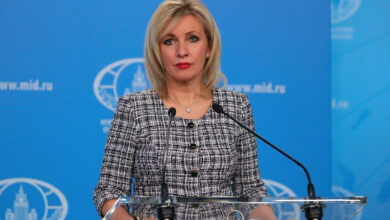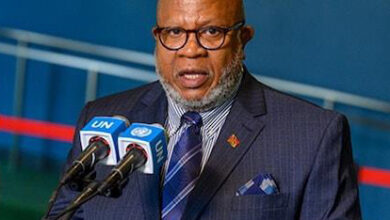India, Russia Partnership Rebooted in Goa

”
Notwithstanding the anti-Russian hysteria whipped up by the Indian media over Russia-Pak military exercise and despite skeptics’ warnings and utterings by doomsayers, no other summit in recent years proved to be as successful as the 17th Indo-Russian Summit that took place alongside the BRICS summit in Goa, October 15. It may be recalled that the Russia-Pak military exercise – sticking to the schedule – was held almost immediately after the Pak-aided terrorist attack on the Uri military base in which 19 Indian soldiers lost their lives. It was then hoped that Moscow, in a bid to show solidarity with its special and privileged partner India, would at least postpone if not altogether cancel its first ever military exercise with Pakistan – India’s avowed adversary since its very inception. But, the exercise went ahead casting serious doubt over the success of the Summit that was to follow soon after. Nonetheless, it goes to the statesmanship of both the leaders that ensured Goa Summit became one of the most successful summits in terms of its outcome.
Formalised in October 2000 – during President Putin’s first ever official visit to India, the Indo-Russian ‘Strategic Partnership’ stands on four major pillars of bilateral cooperation viz., defence, energy, nuclear and science & technology. It is noteworthy, that all these areas were comprehensively addressed with the signing of as many as 16 documents worth billions of dollars that will also make Russia virtually the first country to provide a much needed boost to ‘Make in India’ programme, especially in the area of defence.
Extolling Russia’s contribution to India’s industrial development and defence preparedness in the last six decades, Prime Minister Modi reiterated that Russia would remain India’s major defence and strategic partner and their time-tested partnership would remain an anchor of global security and stability. Invoking a Russian proverb that one old friend is better than two new ones; Prime Minister Modi reaffirmed Delhi’s special ties with Moscow even while it proactively engages with the US and other global power centres in furthering its foreign relations in a multi-polar world.
Among the 16 agreements that covered a variety of projects in the fields of energy – both hydrocarbon and nuclear, infrastructure etc, it was the defence sector which stood out at the Goa Summit, with three major agreements covering the S-400 Triumf air defence system, stealth frigates and the Kamov KA-226T helicopters.
Russia had been offering to build the air defence system for India for a long time with little response from the Indian side. However, in light of the tremendous success achieved by the Russian forces with the deployment of S-400 air defence systems in Syria and the fact that China is purchasing a similar version from Russia awakened India’s keenness to acquire this state-of-the-art systems from Russia. Given the strategic nature of their relationship, Russia has agreed to sell the latest version of the S-400 systems to India. Capable of tackling all types of airborne threats at ranges up to 400 km with a mix of short-medium and long range missiles, S-400 is considered to be the most advanced air defence system in the world. India would perhaps be the first country outside Russia to operate this system which it expects to start receiving by 2020.
Of the four Admiral Grigorovich-class stealth frigates, two would be an outright purchase from Russia while the remaining two would be built in one of the still to be identified Indian shipyards.
Notably, Hindustan Aeronautics Limited (HAL) has been designated to set up a joint venture with Russia’s Rostec State Corporation for the manufacture of Kamov KA-226T helicopters in India. The first 60 of the 200 Kamovs to be acquired by the Indian armed forces will be built in Russia while the remaining 140 or so would be manufactured in India. These helicopters would subsequently be also available for sales to the global customers.
Two other decisions which could have far-reaching impact on India-Russia defence cooperation related to the holding of a ministerial-level Military Industrial Conference later in 2016 to identify new projects and resolve pending issues – especially related to the maintenance and spares support of the equipment already supplied – and, establishment of a Science and Technology Commission to facilitate development and sharing of cutting-edge technologies. The bilateral Commission would focus on matters relating not only to the defence R&D but also in such high-tech areas as IT, Communications, Cyber Security, Medical Engineering, Outer Space Cooperation and Remote Sensing, etc.
These agreements would surely consolidate Russia’s position as India’s principal military hardware supplier, a position that Russia has retained for decades meeting 70 per cent of India’s defence requirements. Interestingly, Mr Sergei Chemezov, Chairman Rostec State Corporation was the leading delegate in Russian President Vladimir Putin’s entourage who spoke candidly with a select group of Indian journalists during the Goa Summit on practically all matters, predominantly about India-Russia defence cooperation, but, also covering other grounds of mutual interest. India Strategic was able to get full transcript of his interview, major excerpts of which are reproduced (see box)
To sum up, even with the ever deepening strategic partnership and strengthening defence cooperation between the two countries what took the US to achieve in a decade was almost equaled in the course of just one day in Goa by Mr Putin’s Russia. Even though these are only estimates at this juncture, the flurry of defence deals signed – S-400 ($5.5 billion), Stealth Frigates ($3.5 billion), Kamov Ka-226T ($1.0 billion) – totaled up to $10 billion which is close to what the USA has achieved in combined deals for the acquisition of C-17 Globemaster III ($4.1 billion), C-130J Super Hercules($ 1+1billion for follow on order), P-8I Poseidon ($2.1 billion), C-47F Chinook & AH-64Apache Longbow ($3 billion) plus the recently inked deal for M777 light howitzer ($750 million), stretching into many years. If one was to add the ongoing Su-30 MKI indigenous production programme and the forthcoming FGFA programmes, the amount could increase to tens of billions of dollars.
Rebooted in Goa, it is evident that Russia would continue to be in the lead as India’s biggest defence partner in the years to come.
|


 On Rostec: Rostec State Corporation is the largest industrial corporation in Russia.
On Rostec: Rostec State Corporation is the largest industrial corporation in Russia. 


